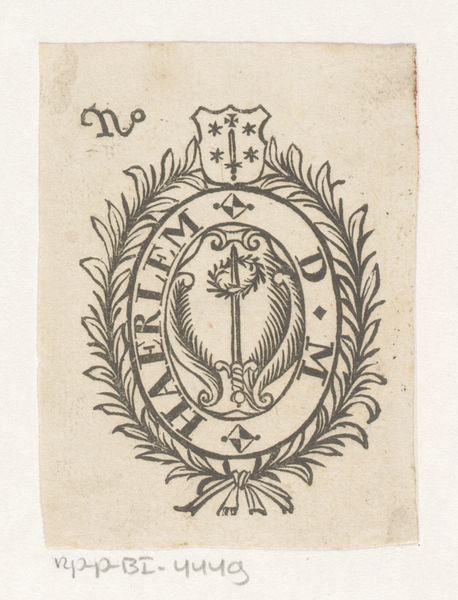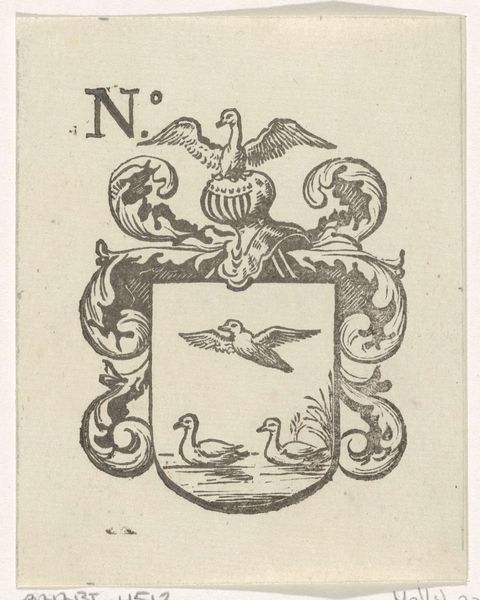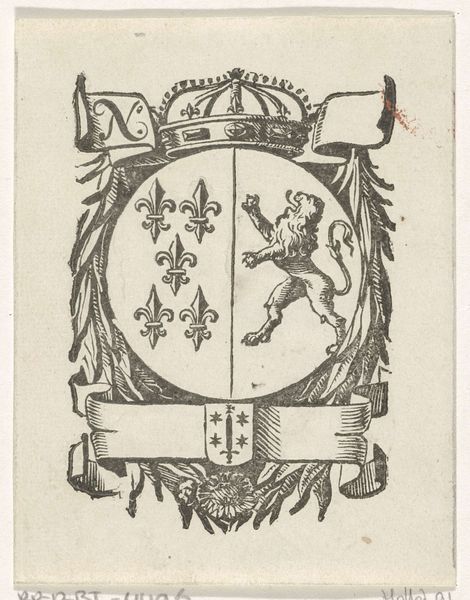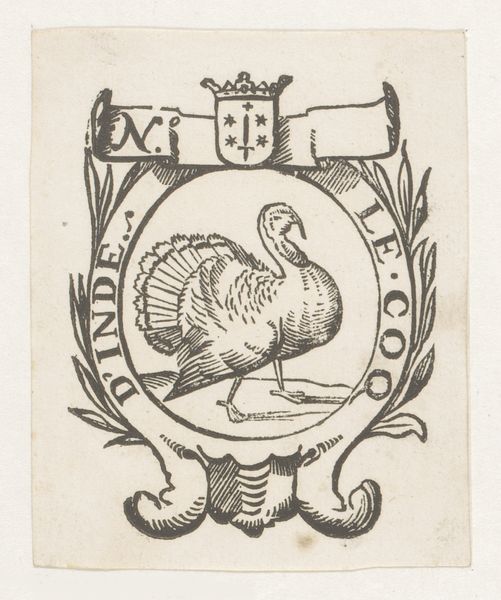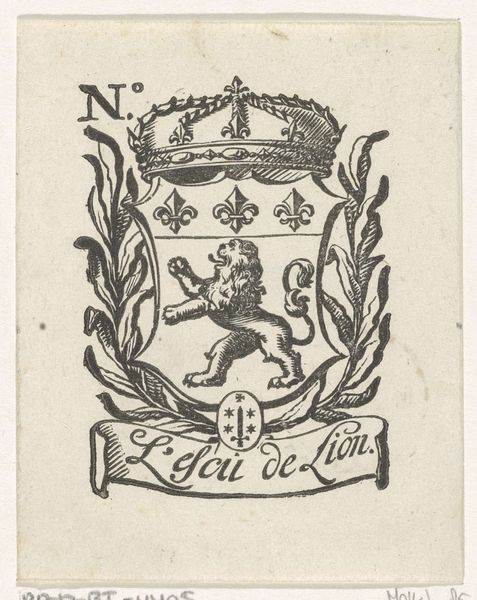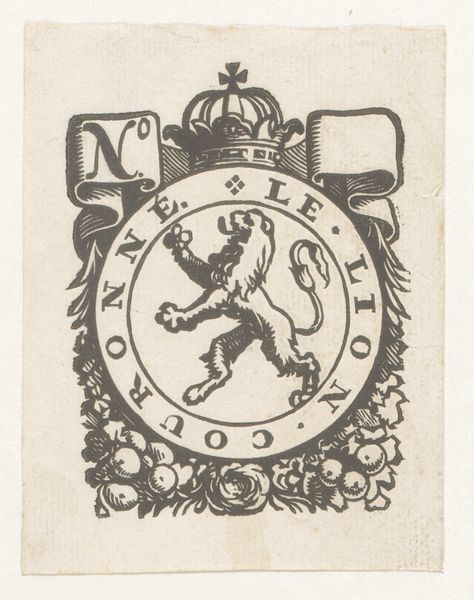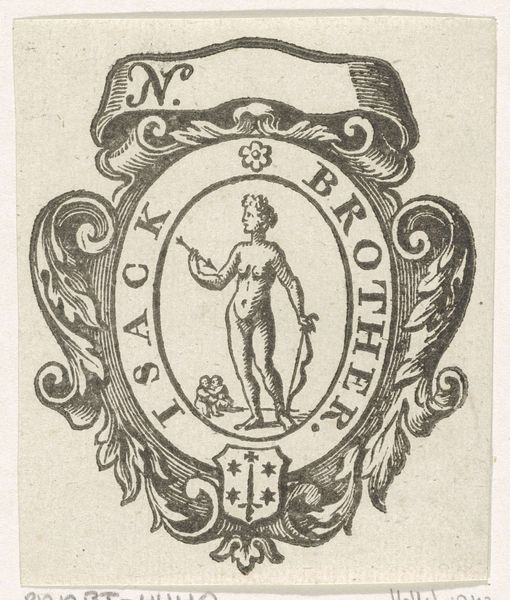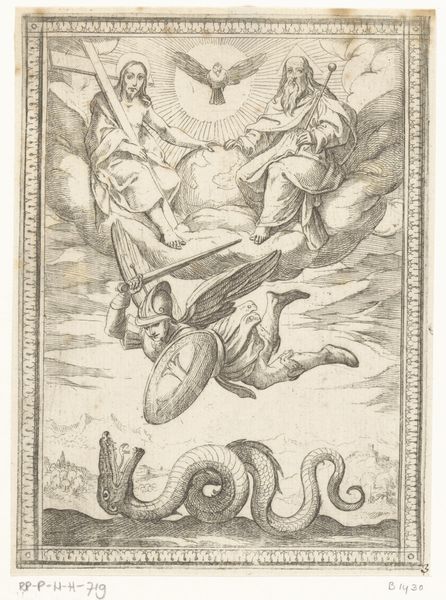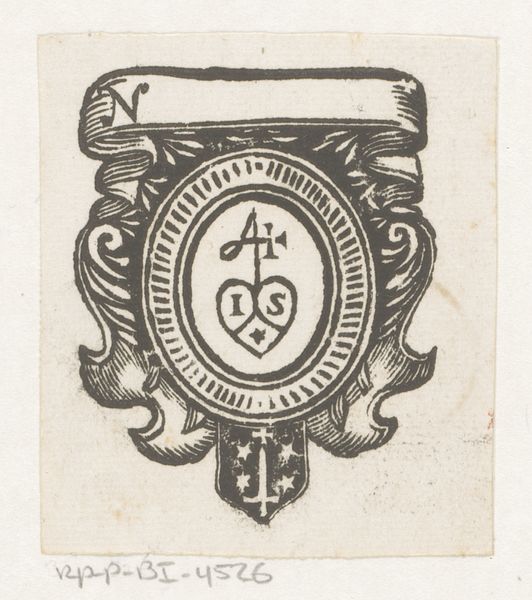
print, engraving
#
medieval
# print
#
pen illustration
#
pen sketch
#
old engraving style
#
engraving
Dimensions: height 81 mm, width 64 mm
Copyright: Rijks Museum: Open Domain
Editor: This is a 17th-century engraving entitled "Vignet van Abraham Hasius," created by an anonymous artist. The detail is just incredible for such a small piece, with all those tiny lines! The goat in the center looks like it's leaping, it's full of movement. What strikes you about this engraving? Curator: The immediate draw is its function. Vignettes of this period were crucial in book publishing, not just decorative, but integral to marketing. They subtly promoted the printer's or author’s brand, shaping the book's reception within literary and intellectual circles. The family crest, if we interpret the image above as such, reinforced the family's status and cultural capital. The prominent initials would likely have served as another layer of authentication and identification. Editor: That’s interesting, the "branding" aspect. It feels so different from how we think about art today, it has such an embedded utilitarian purpose. Curator: Absolutely. Consider the imagery, too. What does a bounding goat suggest? Speed, perhaps, agility. But in a book context? Is it selling a certain type of knowledge as something accessible and transformative, or perhaps, like an excited mind ready to go out and explore? The crown and the shield would need to be carefully investigated, to understand how that coat of arms intersects with broader questions of social power and identity within that historical moment. Who was Abraham Hasius? Why this particular symbol? These are crucial contextual questions that would help unravel its full meaning. Editor: I never considered that. Seeing the image through a more contextual lens opens up completely new avenues of interpretation. Thank you! Curator: Indeed! Analyzing art requires detective work to understand the world it both reflected and shaped.
Comments
No comments
Be the first to comment and join the conversation on the ultimate creative platform.
